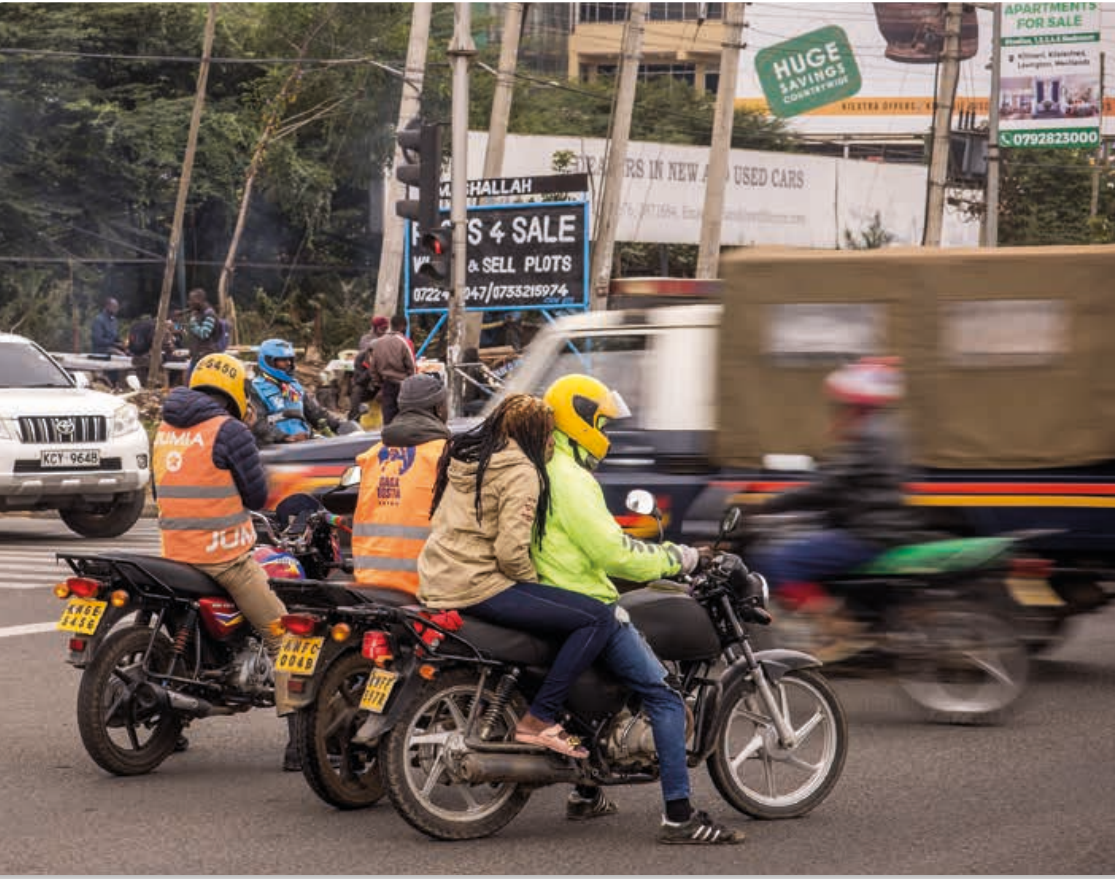 Boda boda riders in Kenya. It
is unacceptable that people doing the right thing by wearing a helmet are not
being protected, says the Global Alliance of NGOs for Road Safety.
Boda boda riders in Kenya. It
is unacceptable that people doing the right thing by wearing a helmet are not
being protected, says the Global Alliance of NGOs for Road Safety.
But new test results reveal that the very helmets most bodaboda riders depend on across Kenya could kill them.
Select helmets from Kenya and nine other countries were subjected to international crash simulations.
They were tested for whether they stay on during impact, whether the chin straps hold, and whether the outer shell absorbs force. Only one helmet (sold in Greece) passed a single test.
This means the rest would not protect the head in a real crash.
Most helmets used in Kenya are cheap imports from China and cost approximately Sh1,000.
“It is unacceptable that people doing the right thing by wearing a helmet are not being protected,” said Lotte Brondum, the executive director of the Global Alliance of NGOs for Road Safety, which carried out the tests and released the results last week.
The helmets were bought from local shops or given by riders in Kenya, Benin, Cote d’Ivoire, Ethiopia, Ghana, Greece, India, Mexico, Nigeria, and Vietnam.
Motorcycles are Kenya’s fastest-growing mode of transport, but also the deadliest. More than 4,000 Kenyans die on the roads each year, with boda boda crashes responsible for a rising share, according to the National Transportation and Safety Authority (NTSA).
Kenya’s Traffic Act (Cap 403) and the Traffic (Amendment) Act, 2022, require both the rider and the passenger on a motorcycle to wear a helmet at all times while on the road.
The law specifies that helmets must meet Kenya Bureau of Standards (KEBS) safety standards.
But the Alliance’s tests expose a cruel gap between regulation and reality.
“We know that substandard helmets pose a serious risk to riders by giving them a false sense of safety,” said Agnieszka Krasnolucka, programmes director at FIA Foundation, a UK road safety non-profit, which financed the study.
“As the motorcycle fleet grows, the need to replace counterfeit with certified helmets is a growing emergency.”
The World Health Organization says a proper helmet reduces the risk of death by 42 per cent and head injury by 69 per cent
“Good helmet standards in use are those from the Netherlands, the United Kingdom, the United Nations Economic Commission for Europe [UNECE] and Viet Nam, among others,” says the WHO in its 2023 technical document “Helmets: a road safety manual for decision-makers and practitioners, 2nd edition.”
It says counterfeit helmets need not be used because they do not provide adequate protection.
“Examples of such helmets are novelty helmets. Novelty helmets do not have expanded polystyrene lining inside the outer shell. They are often made of thin plastic. In a standard helmet, it is this lining that absorbs and redistributes energy from an impact to the head. Motorcycle riders wearing a novelty helmet are almost twice as likely to die in a crash as those wearing a full-face helmet,” the WHO document says.
Researchers of a recent study, "The Burden of Motorcycle Crash Injuries on the Public Health System in Kisumu City, Kenya", tracked 1,073 motorcycle crash cases over six months in Kisumu.
They revealed that nearly half of all victims suffer head and neck injuries, partly because they wore no helmets and wore counterfeit ones. “Injuries to the head and neck region (47 per cent) comprised the majority of injury presentations, with more than half (55.2 per cent) resulting in hospital admission.”
The study was done in Tier III hospitals in Kisumu City, where Boda boda accidents form about half of emergency visits to hospitals.
Among admitted patients, 89.3 per cent required surgery and nearly half of all ICU beds were occupied by motorcycle crash victims.
The findings showed that most pillion passengers do not wear helmets.
“Analysis of the relationship between helmet use and hospital presentation by motorcycle riders and pillion passengers indicates that most motorcycle injury patients (73.6 per cent) were not wearing a helmet at the time of the crash. Lack of helmet use was significantly associated with increased hospital admissions,” the report said.

















